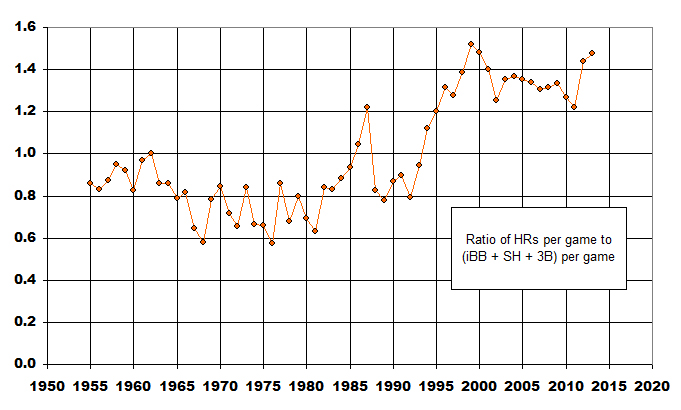Run scoring and such have dropped since the peak of the Steroid Era, but at least for now, the face of the game remains unchanged. Although homers have dropped off some, three other events–triples, intentional walks, and sac bunts–continue to hurtle towards extinction.
Here’s the simple ratio of HR per game to the sum of those other three events. Suddenly, 2013 is looking more like the offensive peak years of 1999-2000.

